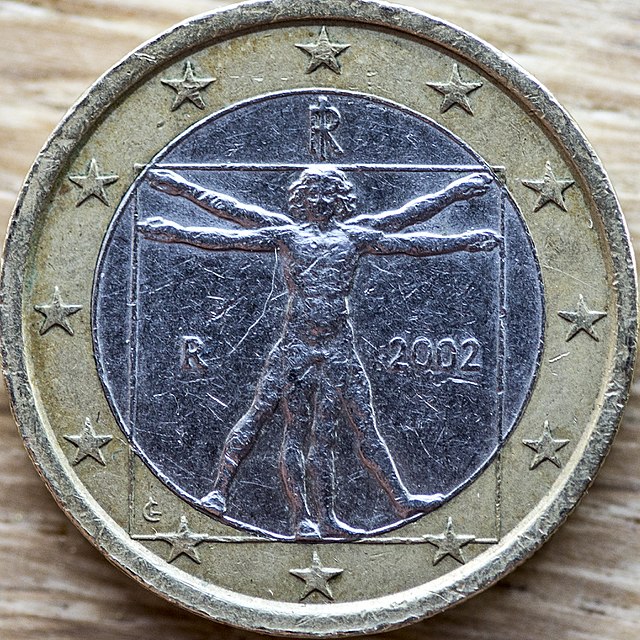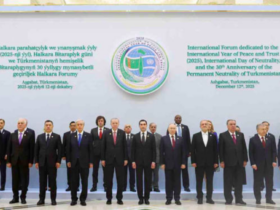Italy is the only country in the European Union where average wages have fallen over the past 30 years. Since 1990, wages in Italy have remained stagnant, while in most of the other advanced countries they have registered significant increases. In 2020, due to the impact of Covid-19, the average Italian salary fell below the levels of thirty years earlier, with a decline of 2.89% to $ 37,769 per year. In the same period, 1990-2020, wages in the OECD Area increased by 33.09%. A different world from the countries of the former Soviet bloc or the former USSR, where salaries doubled, if not tripled in the same period.
The comparison with the rest of the EU yields no better results when economies closer to Italy are considered. In Germany and France, for example, average wages increased by 33.7% and 31.1% respectively, despite starting from already high levels. And even tough southern Europe has seen the lowest wage growth, the balance remains positive compared to Rome. In Greece for instance the increase was 30%. And in Spain, which has had a dynamics of the labor market in many ways comparable to Italy, the average wage has nevertheless increased, albeit slightly (+ 6.2%).
If at the beginning of the 90s Italy was the seventh European state immediately after Germany concerning average annual wages, in 2020 it fell to thirteenth position, below countries such as France, Ireland, Sweden and Spain, which in the 90s had lower wages. In Italy, reports OpenPolis, the greatest increase “in terms of the amount of remuneration was recorded in the years between 1995 and 2010, when the average annual salary of about 37 thousand dollars was progressively increased to 42 thousand. An increase, however, very far from that of other European nations, if we consider that the average Irish salary, for example, in the same years went from about 31 thousand to almost 50 thousand dollars”. Between 2012 and 2019, the variation was minimal, while between 2019 and 2020 there was a rather important decrease, which brought Italian wages back to below 1990 levels.
As currency devaluation is impossible, labor is devalued
Italy’s accession to the Euro did not do the country any good. Especially to wage workers, as we have seen from the data on wage growth. The imposition of a single common currency has, in fact, deprived the national central banks by removing any authority in monetary policy and at the same time any capacity for adapting the currency to the market. In essence, the Euro is unable to express the correct value of each of the nineteen economies: it can only limit itself to attributing a weighted average to them. As national currencies can no longer fluctuate, devaluing and revaluing according to the economic situation, the thorny and until recently ignored question of internal devaluation arises. The admission of the then exponent of the Democratic Party Stefano Fassina still echoes today: “Not being able to devalue the currency, work devalues”.
The Euro as the strong Lira of the fascist era
Entering the Euro area, Italy has seen a decline in wages, a fall in exports and production, an exponential increase in unemployment, a progressive proletarianization of the intermediate social strata and a strong growth in poverty. All effects derive from the attachment to a strong nominal standard. In practice, the accession to the Euro for Italy was essentially equivalent to a link between the Lira and the Deutschmark.
Evidently, however, as Antonio Gramsci said, “history teaches but has no schoolchildren”. In fact, Italy made the same mistake already in 1926, in the era of fascist regime, when Benito Mussolini announced that Italy would conduct a policy of revaluation of the Lira against the Pound, the world currency of reference at that time. The regime, exclusively for reasons of prestige and international credibility, adopted a policy of strong revaluation of the currency, setting the goal at the “prestigious quota 90”. The goal established and achieved in December 1927 with the introduction by Mussolini of the Gold Standard Exchange, was to lead the exchange rate from 153.68 Lire for one Pound to 90 Lire for one Pound. A revaluation of as much as 19% for the Italian currency.
Two years later, with the Lira always attested to the fateful “quota 90”, fascism perched on the strenuous defense of the prestigious quota and the Great Depression of ’29 arriving from the United States of America relegated to some semi-hidden paragraph, since the newspapers of the regime are committed to narrating to the Italians the amazing achievements of fascist corporatism. Meanwhile, the standard of living of Italians worsened considerably. The sharp wage cuts have already been definitively sanctioned through the approval of the “Labor Charter”. The cost of the crisis and the supposed prestige deriving from hard currency is low paid in full to the working class.
The “Lira forte” is one of the flags of the regime, so much so that Mussolini declares himself ready to “defend the Lira to the last breath, to the very last blood”. Certain similarities with the current defenders of the Euro by every means. In fact, even at that time, the social cost of the sudden revaluation was considerable: a net decrease in exports due to the increase in the cost of Italian goods that were no longer convenient. The consequence was the collapse of production and the increase in unemployment. Strong trade balance deficit. Furthermore, another analogy with the current scenario: to support the rise in the Lira it was necessary to resort to deflationary policies on wages which between 1927 and 1928, and without interruption until the early 1930s, underwent decreases from 10% to 20 % depending on the categories. The Italian workers saw their already miserable living conditions worsen.
Thus we arrive at 1930: the Lira is always perched at “90” against the English currency and the situation continues to worsen, also due to the Great Depression that leads US private bankers to request back the millions of dollars loaned to municipalities, Italian institutions and companies starting from 1925. The highest price is always paid by the working class: the unemployed increased by 140 thousand units compared to the previous year, wages suffered a further squeeze (25% agricultural workers – 10% workers industry – strong cuts in the state sector), to the point of becoming the lowest in the entire continent. Meanwhile, the decline in prices was not as steep as that of wages. So much so that the ‘Corriere della Sera’ wrote, “the wage earner makes this very simple reasoning: if the cost of living goes down by 5%, and my wages go down by 10%, who enjoys the difference?”
A question that still remains relevant and finds an answer in the dynamics of the capitalist and liberal economy.
What to do?
For Italy, a question urgently arises: what to do to stop the decline? The current political class is not adequate to address this issue and does not even have the will. Out of subservience to foreign interests, he prefers to see the country sink. Italy is flattened under the weight of a currency that is too strong for its economy. Continuing in this way, the decline could become irreversible. But probably the main mission of Mario Draghi is precisely this: to definitively cancel any hypothesis of independence and sovereignty of Italy.
The former Italian Finance Minister Vincenzo Visco (Democratic Party) stated in an interview in 2012: “Italy outside the euro, given our industrial apparatus, could scare many, including France and Germany who feared our exports priced in lira. But Berlin has consciously managed globalization: it needed a depreciated euro, so today it is in surplus vis-à-vis all countries, except Russia from which it buys energy. It was a rational design, Italy was needed within the single currency precisely because it was weak”.
Yet the alternative is there, it is right in front of our eyes, but the Italian political and ruling class pretends not to see it, because it cannot see it.
Pointing our eyes towards Eurasia we can see a world in full ascendancy and growth as the West flounders and declines together with the United States, what we can now define as a former world hegemonic power.
By breaking the European cage where it is locked up, Italy could go back to racing as it did in the past, strengthening its relations with the Eurasian powers. Starting with China, the new main economic player on a global level, whose considerable imports of Italian products allow Rome’s economy to stay afloat.
The same goes for the Mediterranean: the Euro-Atlantic geopolitical and strategic interests cancel what could be the Italian action to transform what the ancient Romans called Mare Nostrum, into a sea of peace and opportunity. An action that could be developed in cooperation with countries such as Turkey, with which Rome shares important geopolitical objectives and important commercial relations. The joint action of two such as Italy and Turkey could have the effect of stabilizing the Mediterranean and disrupting imperialist plans.
There are alternatives. Lacking is the will and an adequate political class.

















Leave a Reply